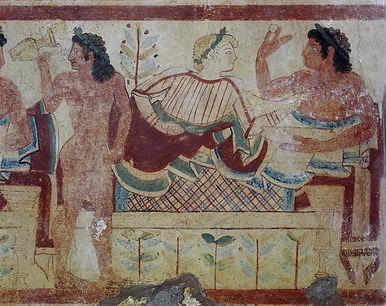Introduction
The Etruscan civilization is often described as mysterious because it was influenced by many other cultures and peoples. The civilization was located in central Italy, west of the Apennine mountains, and was active from 900 to 200 BC. Most historians believe that the Etruscans came from Lydian migrants. These migrants settled in the region of central Italy because of the fertile soil and abundant natural resources. Their economy was largely based on trade. This trade, particularly by sea, put the Etruscan people into contact with other cultures, including ancient Greece, Phoenicia, and Sardinia. Etruria went through both the Bronze and Iron Ages, leaving behind vast collections of artifacts in bronze, iron, and gold. During the height of their power (650-500 BC), the Etruscans excelled in sculpting gold and making bronze mirrors. Most of the information about Etruscan culture and history came from their lavish tombs. Their society was based on family connections and social status, so unfortunately, most of the information archaeologists have describes just the elite upper classes of society. Little is known about the lives of people in the lower class and slaves. The Etruscans were heavily inspired by Greek art and mythology, particularly in their admiration for Herakles and their focus on portraying their myth stories in terracotta pottery and statuary. The Etruscans are attributed with inventing boxing and gladiatorial games. Etruscan religion was heavily based on ritual and understanding death. By 400 BC, Rome conquered Etruria, and by 250 BC, Etruria had adapted to Roman life and customs.
This project explores the history, culture, politics, and trade interactions of the Etruscan people, and analyzes the Etruscan civilization and its place within the ancient world and its influences on future empires and cultures.

Necropolis of the Crocefisso del Tufo at Orvieto

Tomb of the Leopards at Tarquinia